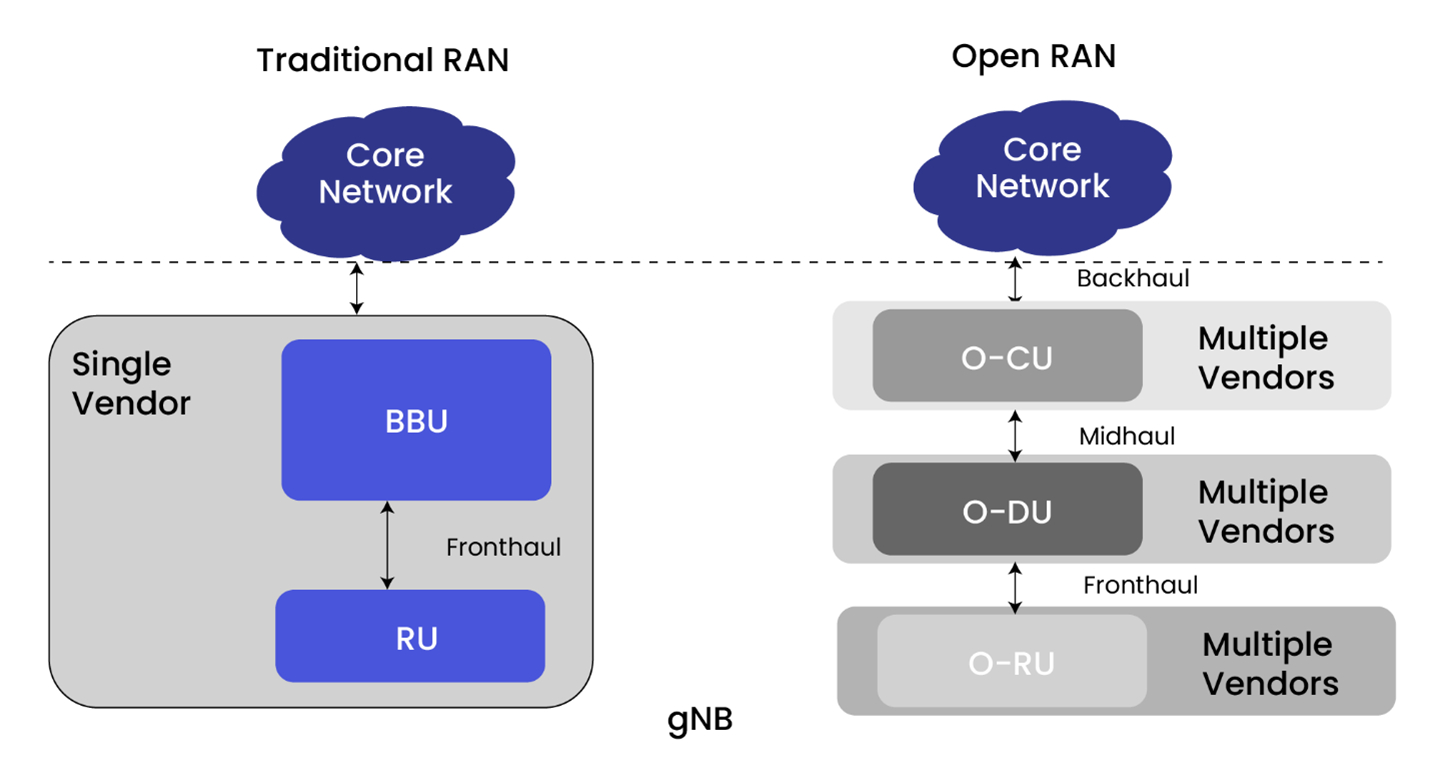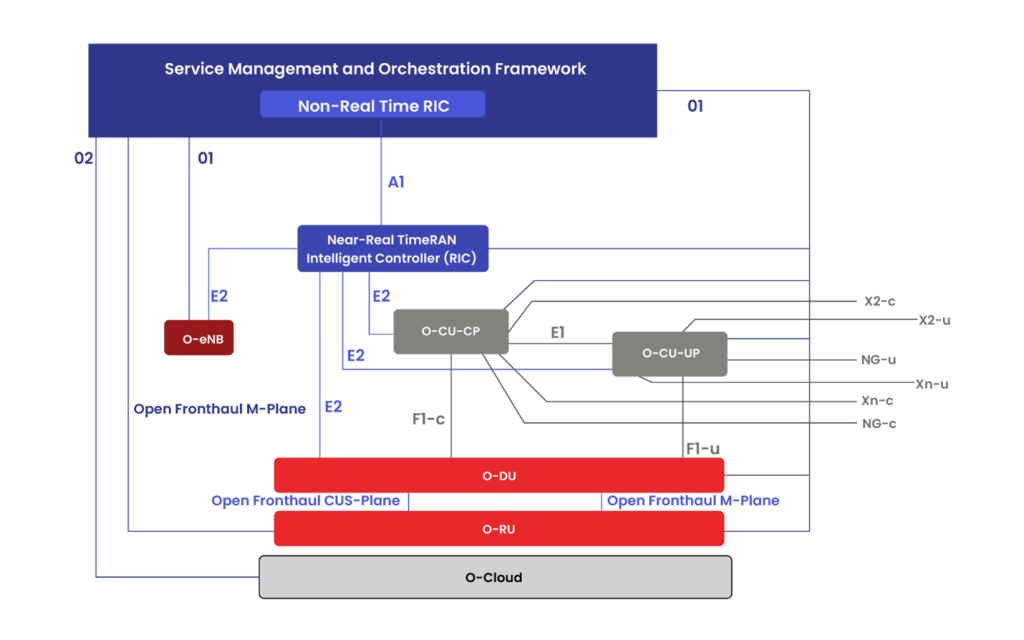The telecom industry is witnessing significant transformation in recent years, compelled by the demand for faster, more reliable, and cost-effective connectivity. The network capabilities are evolving with regards to design, network architectures, operations, orchestration, and security. With the advent of massive, diverse, and advanced Internet of Things (IoT) applications that require a flexible network to meet its varying Quality of Service (QoS) requirements, has instigated the demand of network-upgradation, and network transformation is foreseen as a vital solution to support such varied requirements. Consequently, telecom Service Providers (SPs) should transform their mobile network architecture to stay competitive in the marketplace and deliver futuristic services on this transformation. Additionally, the fundamental aspects of network transformation include network infrastructure migration towards virtualized Data Centers (DCs), enabled by Software Defined Networking (SDN) AND Network Function Virtualization (NFV) principles, and Network Disaggregation.
However, to enable futuristic services, the network must be capable to support multiple radio-links in the network ranging from user-to-network, vehicles-to-network, drone-to-drone, drone-to-network, and device-to-device communications. This multiple radio links connectivity demands a more advanced and flexible Radio Access Network (RAN). However, the existing RAN architecture lacks flexibility as it is based on proprietary hardware and software, limiting economical and rapid network deployments. The requirement of flexible RAN architecture led to the transformation of RAN from distributed architecture to centralized, and virtualized architecture. The evolution initially led to the model of Cloud RAN (C-RAN), and virtualized RAN (vRAN) infrastructure which on further advancements, evolved into Open RAN architecture. Open RAN revolutionizes the telecom network infrastructure, contributing a more agile, flexible, scalable, and interoperable approach in delivering services, benefitting both SPs and end users. Read the blog to explore more details on Open RAN and its architectural components.
Drivers of Open RAN Adoption
RAN and Core Network (CN) mostly contribute 80/20 % respectively in the network deployment costs. This makes RAN the most challenging and expensive part of the network infrastructure. Conventional RAN frameworks constitute proprietary components that depend on hardware-based, centralized, single-vendor modules. These systems lock telecom SPs with particular vendors and expensive integrations, regularly restricting their capability to scale and transform.
Telecom SPs or Mobile Network Operators (MNOs) consider an end-to-end virtualized, disaggregated, and cloud-native network design that runs on cloud infrastructure to reduce the Capital Expenditure (CAPEX) and Operating Expenses (OPEX). The key constituents of this network transformation design comprises:
- Network Disaggregation: breaking down the network into multiple modules that can be selected and assembled depending on the use case model
- Virtualization: which substitutes dedicated network equipment with Network Functions (NFs) and runs these functions as software on Commercial off-the-shelf (COTS) servers
This transformation embraces the disaggregation of the Baseband Unit (BBU) into Distributed Unit (DU) and Centralized Unit (CU) in contrast to the traditional RAN architecture with the integrated BBU and Radio Unit (RU). Open RAN is an innovative solution that can resolve vendor lock-in and limitations to proprietary components with open, flexible, intelligent, fully virtualized and interoperable RAN architecture. This is enabled by multi-vendor interoperability, where the Open RAN framework can be built by any vendor, which can interoperate with any other devices or transmission networks attached to it, as shown in Figure 1. It develops a modular base station software stack that operates on COTS hardware. This allows the operator to assemble BBUs and RUs from any vendor and put them together to form a network to interoperate seamlessly and securely, regardless of its originating vendor. This brings down significant costs for operators on CAPEX and OPEX. The fundamental reason behind MNO’s consideration of migrating towards Open RAN is the facility to pick best-of-breed solutions in place of inflexible one-size-fits-most solutions.

To facilitate an Open RAN solution, numerous standardization bodies, initiatives, and forums play a substantial role. One of the most significant groups is the O-RAN Alliance. It is a technical specification group outlining next-generation RAN infrastructures based on intelligence and openness. O-RAN consists of 200 MNOs, vendors, and research & academic institutions operating in the RAN industry globally. The fundamental objective is to transform the industry towards more intelligent, virtual network functions, general-purpose or white-box hardware, and standardized and open interfaces.
The RAN transformation encompassing the technological and industrial revolution can significantly increase the intricacies of network operations and orchestrations. To cope with these challenges economically, it is crucial to adopt intelligent RAN automation strategies aided by Artificial Intelligence (AI) and Machine Learning (ML) techniques. Service Management Orchestration (SMO) platform in the Open RAN Framework can enable automated network management and orchestration capabilities.
SMO in Open RAN Framework
According to O-RAN Alliance, the Open RAN architecture as shown in Figure 2, comprises the following key components and interfaces.

| Key Elements | Technical Description |
| O-Cloud | Cloud infrastructure which host/runs cloud-native virtualized functions |
| O-CU –CP/UP | Open Centralized Unit and its Control Plane and User Plane |
| O-RU | Open Radio Unit |
| O-DU | Open Distributed Unit |
| O-eNB | Open evolved eNodeB hardware supporting 4G RAN |
| Near Real-Time RAN Intelligence Controller (Near RT-RIC) | software platform supporting third-party applications to run. It utilizes RAN metrics database to capture the network statistics, traffic patterns, RAN configurations and feeds the data to AI/ML models in non-RT RIC.
|
| Non-Real Time RIC (Non-RT-RIC) | Non-RT RIC with the data train the models and feeds to near RT RIC via A1 interface to support Radio Resource Management |
| SMO | Automation platform for Open RAN radio resources – element of the Operational Support System (OSS) |
SMO delivers end-to-end network slicing across the RAN, transport, and core networks. SMO is responsible for RAN domain orchestration. The solution underpins multi-cloud, multi-domain, and multi-tenant deployment models. The significance of SMO in the Open RAN framework includes the following:
- Network Slicing: This creates multiple logical networks according to specific use case requirements. SMO is accountable for the instantiation, allocation, and orchestration of these isolated logical networks or network slices, realizing efficient service delivery.
- Dynamic Service Management and Orchestration: SMO is responsible for resource allocation and utilization as well as service provisioning and orchestration in the Open RAN framework. SMO eases the service lifecycle management by ensuring that the services are created, scaled, and decommissioned as per the requirements. In addition, it dynamically orchestrates the allocation and utilization of compute, storage, and network resources, optimizing resource utilization to support multiple services with diverse requirements.
- FCAPS support: Fault, Configuration, Accounting, Performance, Security (FCAPS) support by proactively monitoring the performance and quality of services to ensure high service availability and reliability.
- Automation: SMO utilizes AI/ML techniques to automate real-time decision-making and proactive orchestration.
- Openness and Flexibility: SMO supports network operators to effortlessly onboard new services, and adapt to varying demands, ensuring agile and flexible services.
- Multi-vendor support and interoperability: SMO attains interoperability among multiple vendors by supporting standardized interfaces and protocols for service management and orchestration.
The following table describes the key SMO interfaces in the Open RAN architecture.
| Key Interfaces | Technical Description |
| A1 | Provisions workflows between the Non-RT RIC and Near-RT RIC |
| O1 | Connects the SMO to the Near-RT RIC, one or more O-CU-CPs, one or more O-CU-UPs, and one or more O-DUs. |
| O2 | Connects SMO and O-Cloud to support orchestration of O-Cloud infrastructure |
| E2 | Connects the Near-RT RIC and one or more O-CU-CPs, one or more O-CU-UPs, one or more O-DUs, and one or more O-eNBs. The E2 interface and the near-RT RIC can collect live network data with X-apps |
| R1 | Supports the manageability of multi-vendor rApps |
| Open Fronthaul CUS | interface that connects O-RU and O-DU |
| Open Fronthaul M-Plane | Interface connecting the O-RU and O-DU and the O-RU and SMO. M-plane supports the management features including FCAPS |
X-apps and rApps are third-party applications or software that are hosted in RIC to enable automation.
With the above capabilities, SMO in O-RAN heightens agility, flexibility, scalability, and efficiency in orchestrating the growing demands of modern wireless networks while embracing openness, interoperability, and multi-vendor support.
In a Nutshell
The fundamental responsibility of SMO is to automate and simplify the orchestration and management of complex and disaggregated Open RAN framework. SMO can be a powerful platform to transform mobile network automation if its capabilities can be extended beyond RAN domain orchestration, supporting multi-vendor and complex next-generation networks.
Calsoft being a Technology-First partner, paves the way to an open mobile future with enhanced mobile access efficiency, strong network performance, and robust security. Calsoft’s Open RAN services incorporate solution design, Integration and testing, software development, and security solutions.


